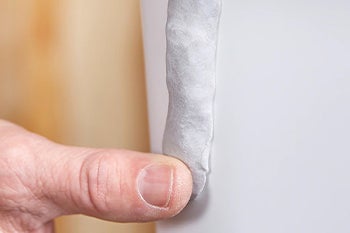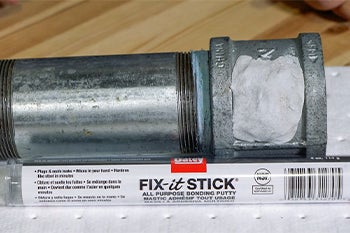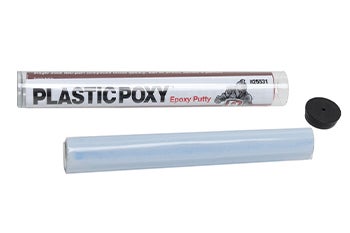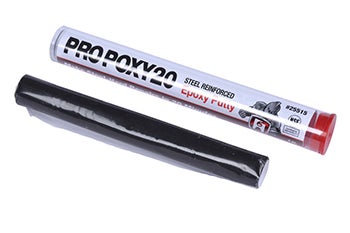Versatility should be epoxy putty’s middle name, as this powerful adhesive can be used to repair various household issues. From water pipes to drains, wood or tile, you can apply epoxy putty to multiple surfaces. Once cured, it holds with strength and durability that would require a professional tool to remove.
Let’s dive into this resourceful repair putty to uncover its magic.

What is Epoxy Putty?
Epoxy putty acts as a seal, patch, and mending compound for various surfaces such as plastics, glass, wood, steel, and metal. Its nontoxic material resists shrinkage and can be used on wet or dry surfaces.
Epoxy putty consists of two compounds — a resin and a hardener — that has a moldable soft consistency similar to clay. This consistency allows epoxy putty to fill holes or cracks by gently pushing the adhesive into the damaged surface.
This putty forms a waterproof seal to temporarily fix leaks in pipes or cracks in cabinets, tiles or masonry. It can also be applied to create watertight seals around plumbing materials, such as copper, brass and other non-ferrous metals.
Click here to see a short clip of an epoxy putty application to fill a hole in a steel pipe.

How to Apply Epoxy Putty
Make sure to roughen and clean all surfaces before using epoxy putty. Knead together equal amounts of both adhesives (resin and hardener). This action will cause a chemical reaction that triggers the putty to harden.
The putty stays moldable for approximately 5-10 minutes after activation. You can apply the adhesive to any surface in need of repair, removing any excess putty.
Once the putty has completely cured, it cannot be manipulated back to its original clay-like state. But it can be drilled, tapped, filed, sanded, sealed, and painted. Storing any remaining putty in an airtight container will keep the adhesive soft and fresh.
How Long Does Epoxy Putty Take to Cure?
It’s important to remain patient to ensure that the applied epoxy putty is fully hardened. Epoxy putty will begin to harden after approximately five minutes. With the Oatey® Fix-It Stick Epoxy Putty, full cure occurs 24 hours after application. However, curing time may vary depending on the manufacturer.
Specialty Types of Epoxy Putty
Although all epoxy putties carry the same chemical makeup, there are specialty epoxies for popular applications.
- Plastic Putty - Plastic Poxy is used to repair plastic surfaces. Often times it comes in an convenient package containing pre-measured epoxy resin and hardener. The Hercules® Plastic Poxy adheres to PVC, ABS, and CPVC pipe and more. It comes in the form of a single, coextruded stick.

- Steel-Reinforced Putty - For metal applications, steel-reinforced putty, usually dark gray, can be used to repair or rebuild steel components. Hercules® Pro-Poxy® is used in plumbing, heating, industrial, maintenance, and home repairs, including electrical insulating and underwater repairs.

Remember: Although cured epoxy putty can act as a permanent fix, in some cases, it should not be treated as such. For example, although the putty can seal a water-pipe leak, it acts only as a “Band-Aid.” If corrosion exists where the leak occurs, the corrosion will continue to spread.
It is best practice to properly fix the pipe as epoxy putty is only a temporary solution.